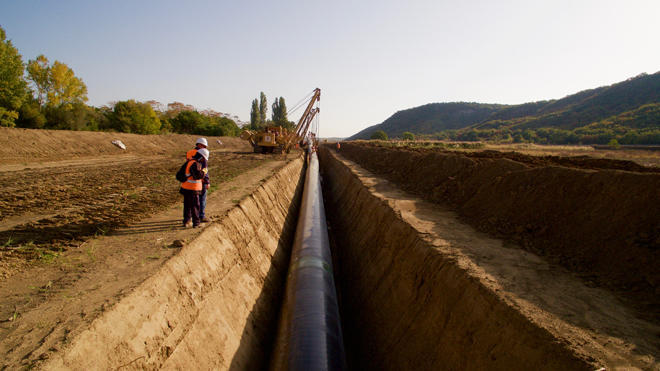Croatia intensifying its efforts to realize Ionian-Adriatic Pipeline

By Mirsaid Ibrahimzade
Croatia intensifies efforts to implement the Ionian-Adriatic pipeline (IAP), via which the country can receive Azerbaijani gas, Trend reports referring to regulatory documents on the gas market in Croatia.
“Croatia is stepping up its efforts to implement the IAP, which will be connected to the Trans-Adriatic Pipeline - a project that receives greater support from the European Union (EU) as an alternative route for gas supplies from Azerbaijan,” the documents say.
It is also recalled that in 2015, at the suggestion of the Croatian company Plinacro, a ten-year development plan for the Croatian gas transmission system was approved for the period 2018-2027.
“The main projects are the construction of a liquefied natural gas terminal (LNG) on the island of Krk in the North Adriatic and the Ionian-Adriatic pipeline. Therefore, the construction of LNG storage facilities on the island of Krk, the completion of the Croatian transport network, connection to international pipelines and the construction of natural gas storage facilities are recognized as strategic national projects,” the documents say.
Note that the IAP pipeline in the Albanian city of Fier is planned to be connected to the Trans-Adriatic Gas Pipeline (TAP), which is intended for the supply of Azerbaijani gas to Europe. The IAP will ensure the supply of Azerbaijani gas to a number of countries in South-Eastern Europe.
The pipeline will pass through Albania, Montenegro, Bosnia and Herzegovina and will be completed in Croatia.
Recall that the TAP worth 4.5 billion euros is part of the Southern Gas Corridor project.
The initial capacity of TAP will be 10 billion cubic meters of gas per year with the possibility of doubling it.
It is expected that the construction of TAP will be completed in 2020, so that in the same year the first Azerbaijani gas would enter Europe.
The length of the pipeline is 878 kilometers, of which 550 kilometers will be laid on the territory of Greece, 215 kilometers on Albania, 105 kilometers on the bottom of the Adriatic Sea and eight kilometers on the territory of Italy.
The shareholders of TAP are: BP - 20 percent, SOCAR - 20 percent, Snam - 20 percent, Fluxys - 19 percent, Enagás - 16 percent, Axpo - five percent.
On November 21, 2018, Trans-Anatolian Pipeline (TANAP) and the Trans-Adriatic Pipeline (TAP) have been joined along the shores of the Maritsa River at the Turkish-Greek border. As a result of the joining of these two pipelines, Azerbaijani natural gas from the Shah Deniz-2 field can be transported to Italy via Azerbaijan, Georgia, Turkey, Greece, Albania, and the Adriatic Sea.
The Trans-Anatolian Natural Gas Pipeline (TANAP) is a natural gas pipeline in Turkey. It is the central part of the Southern Gas Corridor, which will connect the giant Shah Deniz gas field in Azerbaijan to Europe through the South Caucasus Pipeline, TANAP and the Trans Adriatic Pipeline. The pipeline has a strategic importance for both Azerbaijan and Turkey. It allows the first Azerbaijani gas exports to Europe, beyond Turkey. It also strengthens the role of Turkey as a regional energy hub.
The TANAP is operated by SOCAR. SGC holds 58 percent stake in the project. Turkey's pipeline operator BOTAŞ own 30 percent, while BP acquired 12 percent in the project on March 13, 2015. The TANAP project company is headquartered in the Netherlands.
---
Follow us on Twitter @AzerNewsAz
Here we are to serve you with news right now. It does not cost much, but worth your attention.
Choose to support open, independent, quality journalism and subscribe on a monthly basis.
By subscribing to our online newspaper, you can have full digital access to all news, analysis, and much more.
You can also follow AzerNEWS on Twitter @AzerNewsAz or Facebook @AzerNewsNewspaper
Thank you!
